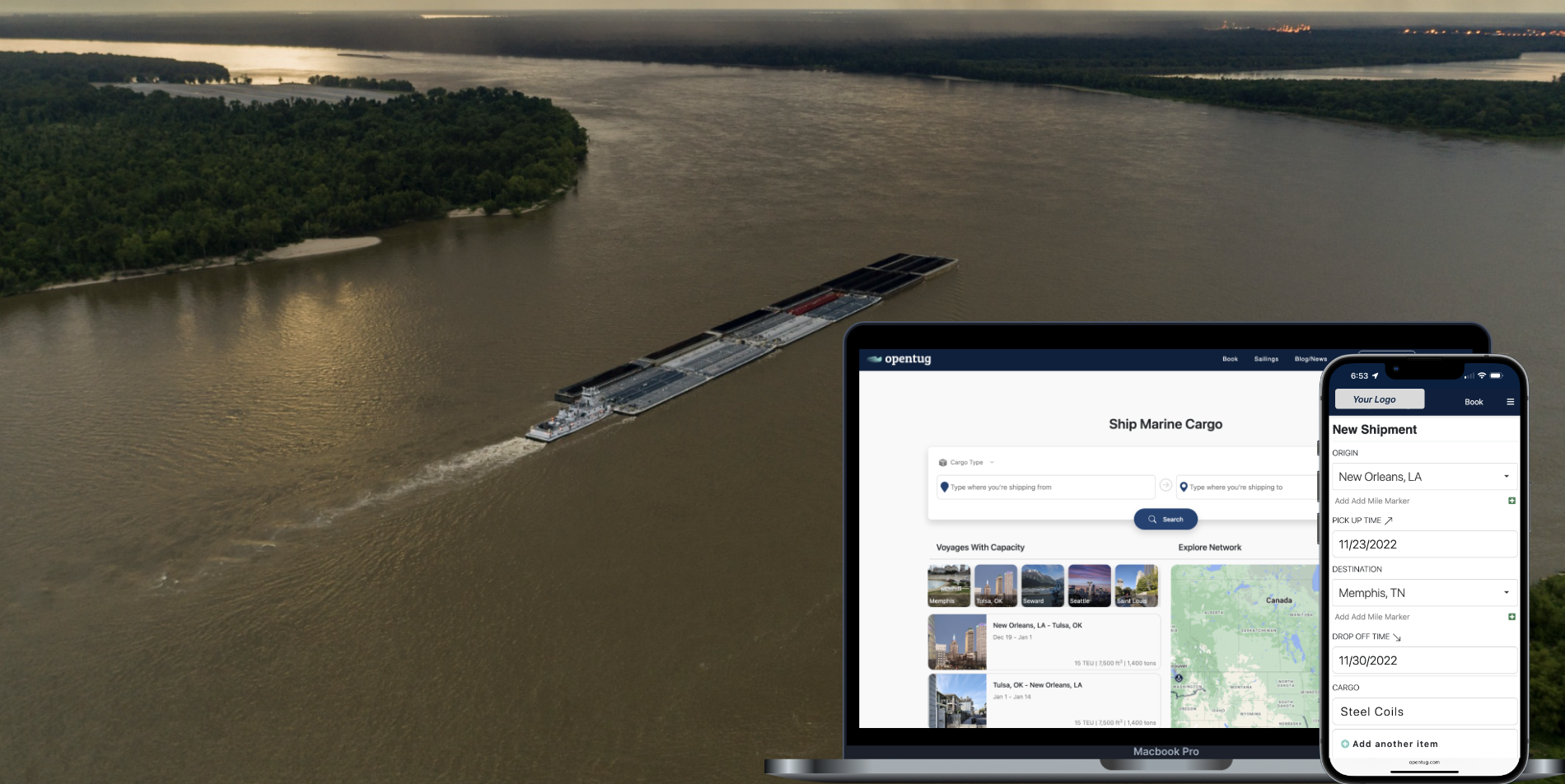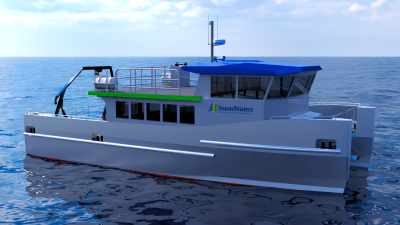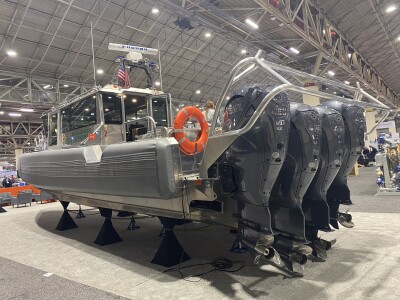How does OpenTug newly enable connections across the inland transport industry?

While the benefits associated with making marine transportation go digital have long been understood, the challenges associated with doing so have prevented many from making this transition. Whether it’s technology solutions that are too difficult to properly utilize or an unwillingness to change from “the way things have always been done,” a variety of obstacles have stopped many from using new digital tools and platforms that could positively change their bottom line. Finally moving past these challenges with shipping on inland waterways is what the OpenTug platform was designed to both enable and support.
Using traditional methods, there's no easy way for a shipper to see where, when, and how the inland system can service their cargo. Intuitive platforms to find services and bookings are utilized for other modes of transport like air and rail, making them increasingly attractive in today's rapid supply chain. OpenTug was created to enable these same efficiencies in marine transportation thanks to a simple interface and connectivity platform that connects operators, shippers and facilities across the global supply chain.
Fully enabling the digital shift of marine transportation, especially domestically, is something OpenTug is doing in small and large ways. Doing so is leading to increased access and awareness that will naturally increase cargo volume but what does it mean to actually enable these benefits? How difficult is the learning curve and in what ways does the platform truly simplify marine shipping?
The limitations of “the way things have always been done”
In the marine logistics world, parties wear multiple hats. Barge operators may operate terminals or have shipping needs of their own. Terminal operators often need to forward cargo. OpenTug enables each user type to offer their transportation capacity or make a request to ship cargo. The simplicity and transparency of the platform underscores a deeper understanding of the gaps that current exist in the inland transport industry.
“In the inland market, there’s a huge reliance on established relationships and personal connections to solve a heavy asset shipping needs,” said Jason Aristides, who serves as the Director of OpenTug. “Those relationships are irreplaceable but all shippers should have an easy way to move cargo on our nation's greatest transportation assets. I saw the limitations of this setup firsthand working in the Industry. During my college career, I was lucky to work closely with the great folks at Foss Maritime and Curtin Maritime. After hauling cargo to Alaska, the southbound leg was usually empty. My colleagues lamented the fact that there was not an easy way for them to notify shippers of this available capacity. They talked about how it would be a win-win if we get that otherwise empty space loaded, and that concept drove the creation of OpenTug.”
The limitations with the ways things have always been done are evident, as a reliance on word-of-mouth connections do not work at the incredible scale of the industry. OpenTug expands and newly enables these connections in ways that simplify current marketing efforts while also creating entirely new value propositions. Using the OpenTug platform, any operator with a yard or additional space can earn revenue by promoting that space at a time when national storage capacity is at a low.
Additionally, the OpenTug platform drives operators and shippers to facilities using algorithms to find the best fit based on crane capacity, loading capacity, open warehouse space, and more. The benefits associated with digitizing barge and terminal bookings are as powerful as they are numerous.
“OpenTug’s improved visibility for terminals is only one part of the picture,” Aristides told Workboat. “Alongside improved marketability, we provide terminals with a full platform to manage orders, schedules, and capacity used for their existing business. This significantly improves the standard of service for their customers and reduces the complexity required for staff to handle operations.”
The learning curve to use OpenTug is minimal. Anyone who has booked a flight or posted something on Craigslist can market their capacity or make a request on OpenTug. Currently, a marine operator can create an account and have their first voyage published in under 10 minutes. The opportunities associated with doing so are being realized by individual users but can also be seen across the entire inland transport industry.
Understanding the benefits of simplifying marine shipping
The direct costs associated with a new tool or process as well as the indirect challenges of making change often prevent stakeholders from moving forward with adoption. However, what’s never really considered are the inefficiencies and waste built into established processes, especially in the inland shipping industry. The cost of errors and lost time that comes from requesting and managing many shipments in a spreadsheet or email is practically incalculable. Additionally, inadequate scheduling can lead to an unnecessarily increase in costs and a calculable decrease productivity.
As an example of what this can look like, many logistics managers do not understand where and how marine transportation can ship their cargo domestically, so they default to using trucks. That default can be exponentially more expensive than an inland shipping alternative, especially when those managers can see and track this cargo without many phone calls and emails. On the other side of it, operators don’t really know how beneficial it can be to passively add new shipments into their existing voyages with very little oversight. The opportunities and efficiencies that OpenTug represents can be game-changing for individual managers and operators but they’re also changing expectations across the industry.
“Our success will help increase the number of shippers utilizing waterways, ultimately expanding our nation's freight-carrying capacity and doing it sustainably,” Aristides continued. “70% of cargo travels by trucks, with an increasing shortage of drivers, while US freight activity is expected to grow 50% to ~$36 trillion in the next 30 years. Since over 54% of our population lives near a body of water, it makes sense to simplify marine shipping.”
The marine operators using OpenTug today have seen the time required to manage sales processes and customer requests decrease significantly, enabling their team to handle more bookings and more customers than ever before. Additionally, driving awareness to the inland waterways as an efficient means of transportation will move the entire logistics industry forward. The more freight traveling on the water, the bigger the market for operators and the less congestion for everyone else.
This larger transformation is what platforms like OpenTug can uniquely enable when it comes to simplifying marine shipping. Having one system that binds customer acquisition, booking, sales, and marketing into a single suite has brought marine services up to speed with the digitization of everything. It’s a development that will open up distinct benefits for operators, terminals, and shippers, but doing so is contingent on taking that first step to move beyond the way things have been done in the inland shipping market.
“OpenTug’s full potential is unlocked when leveraged for all of your operations,” Aristides said. “It’s incredibly easy to get started by simply posting sailings or listing your company as available for service. After your team better understands the value in your first few bookings, it’s straightforward to start using OpenTug for all of your bookings.”
Stop by Booth 253 at the Workboat show to learn more about OpenTug and sign up for updates by filling out the form below.






